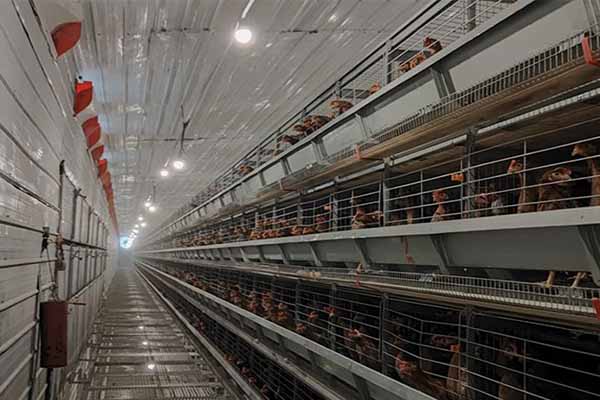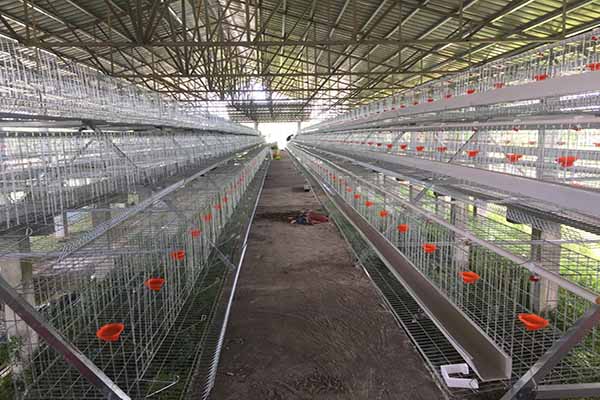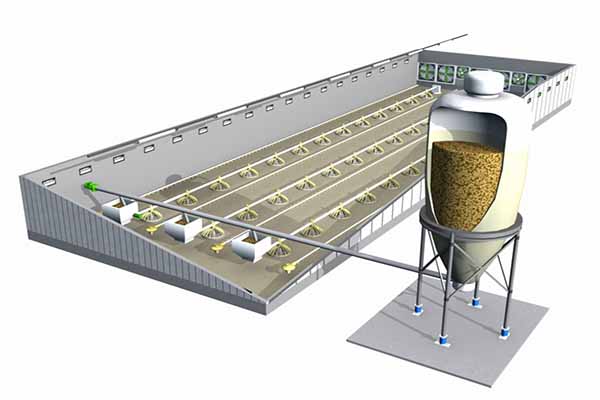Full Automation Equipment for Uganda Chicken Farms: Life Cycle Cost Analysis
Time : 2025-06-28
As the demand for poultry products continues to grow in Uganda, the implementation of full automation equipment in chicken farms has become a crucial factor for enhancing productivity, efficiency, and cost-effectiveness. This article aims to explore the benefits of full automation equipment for Uganda chicken farms, focusing on the life cycle cost analysis. By understanding the long-term financial implications of investing in such technology, farmers can make informed decisions that will ultimately contribute to the growth and sustainability of their businesses.
Introduction to Full Automation Equipment in Chicken Farms
Full automation equipment refers to the use of advanced technology to automate various processes in chicken farming, including feeding, watering, ventilation, egg collection, and waste management. This technology has revolutionized the poultry industry, enabling farmers to produce more with less labor, reduce feed waste, and maintain optimal conditions for the chickens’ health and well-being.

Benefits of Full Automation Equipment
1. Increased Productivity
One of the primary advantages of full automation equipment is the significant increase in productivity. Automated systems can operate 24/7, resulting in continuous production, which is essential for meeting the growing demand for poultry products. Additionally, automated systems can handle larger chicken populations, making it possible for farmers to expand their operations without increasing labor costs.
2. Reduced Labor Costs
By automating various processes, full automation equipment can significantly reduce labor costs. With fewer workers required for daily operations, farmers can allocate their resources more efficiently, potentially leading to higher profits. Moreover, automated systems can perform tasks with precision and consistency, minimizing errors and reducing the need for manual oversight.
3. Improved Animal Welfare
Automated systems can provide optimal conditions for chickens, including temperature control, lighting, and ventilation. This, in turn, improves the overall welfare of the chickens, leading to better growth rates, reduced mortality, and higher-quality poultry products. A healthy flock translates to higher profits for farmers in the long run.
4. Enhanced Biosecurity
Full automation equipment can contribute to better biosecurity in chicken farms. Automated systems can minimize human contact with the chickens, reducing the risk of disease transmission. Furthermore, automated systems can detect and isolate sick birds, preventing the spread of diseases throughout the flock.
Life Cycle Cost Analysis
1. Initial Investment
The initial investment in full automation equipment can be substantial. This includes the cost of purchasing the equipment, instal ling it, and training staff to operate it. However, the long-term benefits of this investment often outweigh the initial costs.
ling it, and training staff to operate it. However, the long-term benefits of this investment often outweigh the initial costs.
2. Operating Costs
Operating costs include the energy consumption of the equipment, maintenance, and repairs. Although automated systems may consume more energy initially, they can lead to significant savings in the long run. For instance, automated feeding systems can prevent feed waste, reducing the cost of feed. Moreover, regular maintenance can prolong the life of the equipment, minimizing repair costs.
3. Savings on Labor Costs
<p As mentioned earlier, full automation equipment can significantly reduce labor costs. By automating tasks such as feeding, watering, and waste management, farmers can allocate their staff to more critical tasks, such as monitoring the health of the chickens and managing the farm's overall operations.
4. Productivity and Quality Improvements
Increased productivity and improved quality of poultry products can lead to higher sales and, consequently, higher revenue. By investing in full automation equipment, farmers can position themselves as providers of high-quality, cost-effective poultry products, attracting more customers and ensuring a steady market for their products.
Conclusion
Investing in full automation equipment for Uganda chicken farms can bring numerous benefits, including increased productivity, reduced labor costs, improved animal welfare, and enhanced biosecurity. While the initial investment may be significant, the long-term financial implications, such as savings on operating costs and increased revenue, can make it a worthwhile investment. By conducting a thorough life cycle cost a nalysis, farmers can make informed decisions that will contribute to the growth and sustainability of their poultry operations.
nalysis, farmers can make informed decisions that will contribute to the growth and sustainability of their poultry operations.











